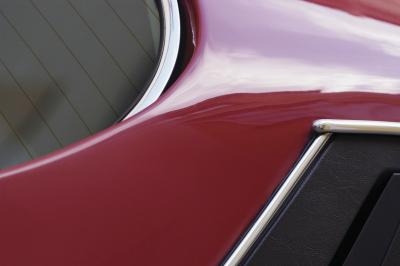
Acid rain is not a good thing, and it's getting worse. According to the Encyclopedia of Earth, as global economies grow, fossil fuel combustion also will rise, further spreading acid rain, which will make your car look dirtier faster. Worse, acid rain corrodes paint, causes permanent damage and decreases resale values. Typically acid rain damages the flat surfaces of a car such as trunk, hood and roof; if your car has randomly shaped scratchy areas, chances are you have acid rain damage.
"Acid rain," what automakers typically refer to as "environmental fallout," is a term used to describe the deposit of damaging pollutants, whether wet or dry. These pollutants are released by burning fuels and react with other elements in the atmosphere and become acids. Rain itself is not the culprit, rather, the rain dries, leaving the concentrated acid part. Paint acts like a sponge and it keeps collecting all that acidic material. The next time the car gets wet, it reactivates the acids.
Repeated exposure is bad. If you consistently park your car in a covered area, garage or carport, you can avoid some of the worst effects of acid rain. Some manufacturers used acid-resistant paints, which costs a lot less (about $5 per car) than it might cost you to fix a problem afterward, according to the Environmental Protection Agency. To avoid permanent scarring, have your car washed and hand-dried frequently. Light-colored vehicles seems to suffer less obvious damage; darker-colored vehicles will show wear sooner.
If your car already has been subject to acid rain, you still have some recourse, according to Mobileworks Auto Detailing Business Network. Hire a professional to have your contaminated paint cleaned up. A high-quality polymer paint sealant also has co-polymers and amino functional resins that will fight future acid rain while resisting the effects of soap and sun.
If your car windows and windshields have a filmy look, you might have acid rain buildup. To clean, make your own mixture. Add 1 cup of vinegar to 1 quart of water in a spray bottle. Spray the windshield and use a clean part of the cloth for each swipe. A bonus: vinegar won't create streaks on glass. Regularly clean wheels and tires to minimize the cracking effect associated with acid rain. Scrape off any crusty mud or tar, then clean with a nonacidic household cleaner diluted in water. Start with the tires, focusing on the grooves. Rinse your brush before moving to the wheels and use an up-and-down motion.